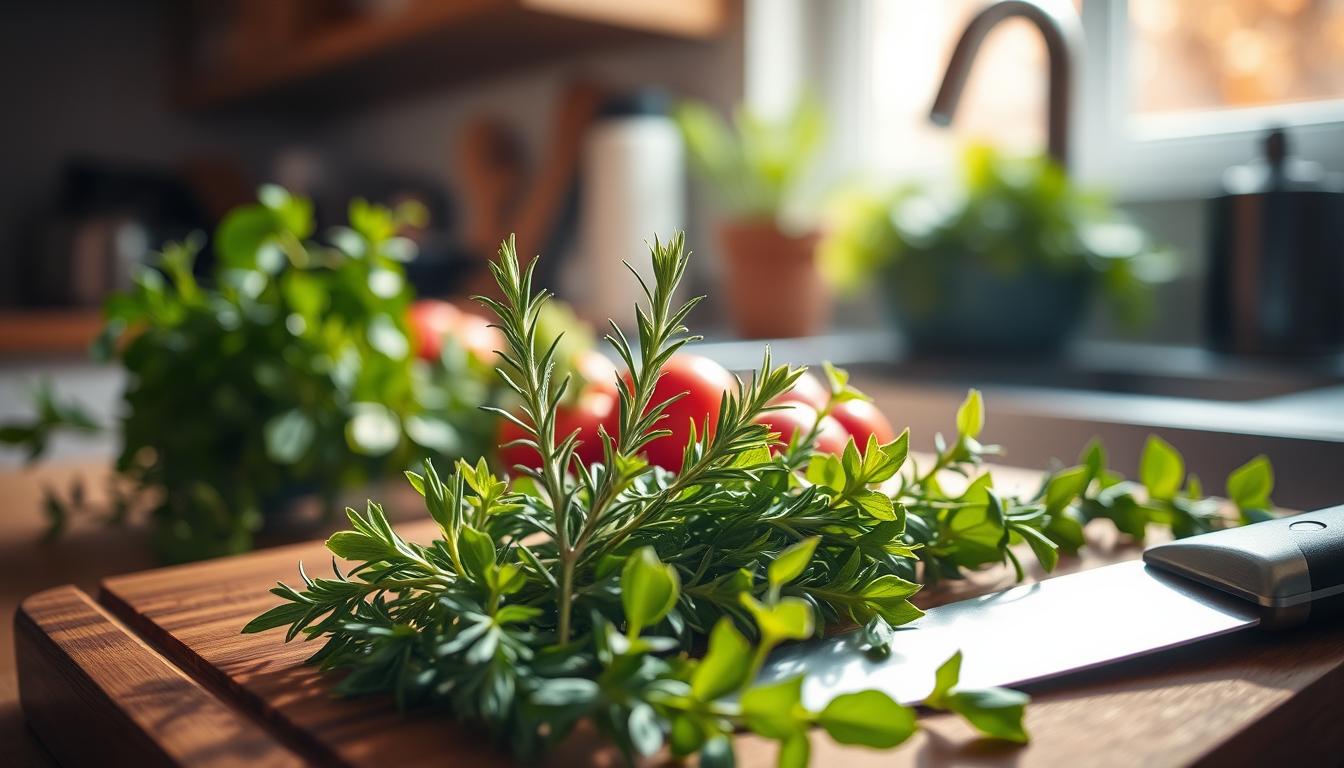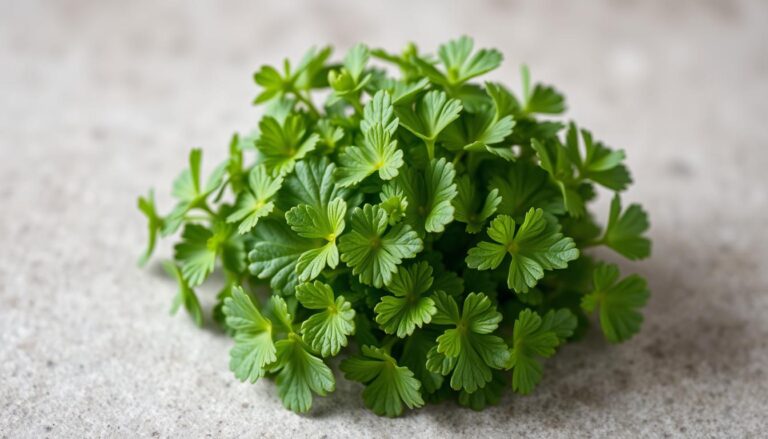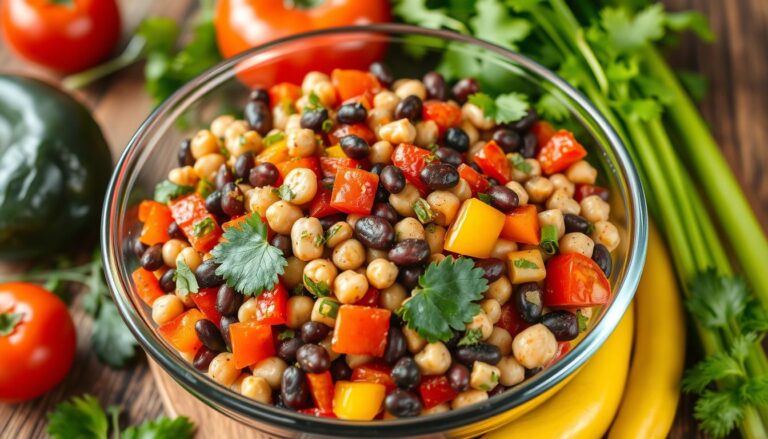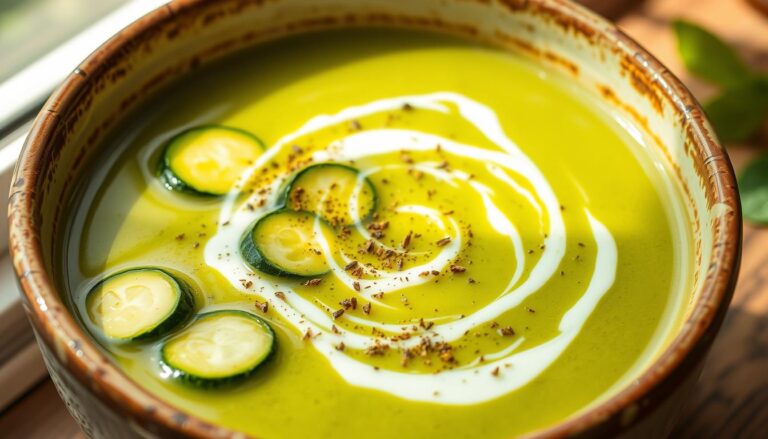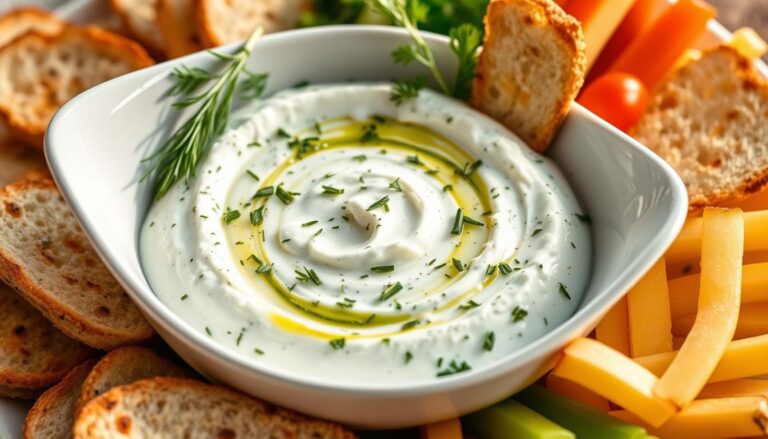Herb and Rosemary A Tasty Pairing for Your Dishes
Want to make your dishes taste better? Try mixing rosemary with other herbs for a delicious twist.
Rosemary is a fragrant herb that brings out the best in many foods. It’s great with roasted chicken, grilled lamb, and even tomato sauce.

When you pair herbs like rosemary with the right flavors, your meals get even better.
Key Takeaways
- Rosemary pairs well with herbs like thyme and oregano.
- Combining rosemary with garlic enhances the flavor of roasted meats.
- Rosemary can be used in a variety of dishes, from soups to salads.
- Pairing rosemary with lemon juice adds a bright, citrusy flavor.
- Experimenting with different herb combinations can elevate your cooking.
The Aromatic World of Rosemary in Culinary Arts
Rosemary is a standout in the kitchen with its unique taste and flexibility. It has an earthy, woodsy flavor with hints of pepper, lemon, and mint. This makes it a hit with chefs and home cooks. It goes well with grains, potatoes, onions, mushrooms, and proteins like lamb, poultry, beef, chicken, and fish.
Understanding Rosemary’s Distinctive Flavor Profile
Rosemary’s special taste comes from its essential oils. These oils are released when the herb is heated or chopped. This unique flavor makes rosemary great for many dishes, from roasted meats to veggies.
Culinary Uses of Rosemary Across Different Cuisines
Rosemary is loved in many cuisines, especially in Mediterranean cooking. It’s a key ingredient in Italian, Greek, and French dishes. It’s used to flavor meats, soups, and stews. Rosemary also adds flavor to marinades and bread.
Fresh vs. Dried Rosemary: When to Use Each
Fresh and dried rosemary have their own roles in cooking. Fresh rosemary is best for dishes where its aroma and taste can really shine, like in roasted meats or as a garnish. Dried rosemary, being more concentrated, is great for long-cooking dishes like stews and braises.
Knowing when to use fresh or dried rosemary can make your dishes even better. It lets you fully enjoy this herb’s culinary possibilities.
Why Certain Herb Paired with Rosemary Create Culinary Magic
Rosemary is special because it goes well with many herbs. It’s a key ingredient in Mediterranean and Italian cooking.
The Science Behind Flavor Complementarity
Knowing how flavors work together is important. Herbs have unique compounds that make them smell and taste different. When you mix them, you get new, interesting flavors.
Rosemary has camphor and borneol, which make it taste piney and a bit bitter. Thyme, with its thymol, balances out rosemary’s strong taste. Thymol adds a warm, minty flavor that goes well with rosemary.
| Herb | Key Compounds | Flavor Profile |
|---|---|---|
| Rosemary | Camphor, Borneol | Piney, Slightly Bitter |
| Thyme | Thymol | Warm, Slightly Minty |
| Oregano | Carvacrol | Pungent, Earthy |
Balancing Intensity and Subtlety in Herb Combinations
When mixing herbs with rosemary, it’s important to find the right balance. Rosemary is strong, so adding milder herbs helps keep the dish balanced.
Proper Preparation Techniques for Herb Pairings
To make the most of herb pairings, how you prepare them matters. Techniques like chopping, bruising, or infusing help release their oils and flavors.

By understanding how flavors work together and balancing them, you can make amazing dishes. Try different herb combinations to find what works best for you.
Thyme and Rosemary: A Classic Mediterranean Duo
In Mediterranean cooking, thyme and rosemary are key. They add flavor to many dishes. Together, they mix rosemary’s piney taste with thyme’s earthy flavor, making food taste better.
Flavor Profile of This Timeless Combination
Thyme and rosemary work well together. Rosemary’s strong taste is balanced by thyme’s mildness. This mix makes food taste great without being too strong.
Best Dishes to Showcase Thyme and Rosemary Together
These herbs are great with roasted meats and veggies, soups, and stews. They add warmth and depth, perfect for cozy meals.
Preparation Tips for Optimal Flavor Release
To get the most flavor from thyme and rosemary, prepare them right. Here’s how:
Roasted Meats and Vegetables
For roasting, sprinkle thyme and rosemary on meats and veggies near the end. Mixing them with oil or butter can make flavors stronger.
Soups and Stews
In soups and stews, add thyme and rosemary early. This lets their flavors blend with other ingredients. You can tie them up for easy removal later.
| Dish Type | When to Add Thyme and Rosemary | Preparation Tip |
|---|---|---|
| Roasted Meats and Vegetables | Towards the end of cooking | Mix into oil or butter for roasting |
| Soups and Stews | Early in the cooking process | Tie with kitchen twine for easy removal |
Sage and Rosemary: Earthy Companions for Hearty Dishes
Looking to add depth to your cooking? Start with sage and rosemary. These herbs have earthy and slightly bitter flavors. They pair well together, making them ideal for hearty dishes.
Complementary Flavor Notes Between Sage and Rosemary
Sage has a warm, slightly bitter taste. Rosemary adds a fresh piney flavor. Together, they create a balanced flavor that enhances many dishes. Their secret is balancing intensity and subtlety.

Ideal Meat and Vegetable Pairings
Sage and rosemary are great with meats like pork, lamb, and chicken. They also pair well with root vegetables like carrots and potatoes. They shine in roasted or grilled dishes.
Traditional and Modern Recipes Featuring This Combination
This herb duo is a holiday favorite. It’s often used in stuffings and roasts.
Holiday Stuffings and Roasts
In holiday cooking, sage and rosemary are key in stuffing recipes. They add a rich, savory flavor that goes well with meat.
Compound Butters and Infused Oils
For a modern touch, make compound butters or infused oils with sage and rosemary. These add a subtle herb flavor to dishes just before serving.
| Dish | Herb Combination | Flavor Profile |
|---|---|---|
| Roasted Chicken | Sage & Rosemary | Earthy, Savory |
| Grilled Lamb | Rosemary & Sage | Piney, Slightly Bitter |
| Roasted Potatoes | Sage & Rosemary | Rich, Earthy |
Oregano and Rosemary: The Italian Kitchen Essential
Adding oregano and rosemary to your Italian dishes can make them better. This mix is key in Mediterranean cooking and loved in Italian kitchens.
Mediterranean Roots of This Powerful Pairing
Oregano and rosemary are herbs from the Mediterranean. Oregano brings a strong taste that goes well with rosemary’s pine flavor. Together, they add a rich taste to many Italian dishes.
Perfect Pasta, Pizza, and Tomato-Based Recipes
In Italian cooking, oregano and rosemary are used a lot. They’re great in pasta sauces, pizza toppings, and tomato-based dishes. For example, adding fresh oregano and rosemary to pasta sauce boosts the flavor. Sprinkling dried herbs on pizza before baking adds a tasty herb note.
Dried vs. Fresh: How to Use Both Forms Effectively
Dried and fresh oregano and rosemary both have their uses. Dried herbs are strong and used little, while fresh herbs add a fresh taste. Use dried herbs in sauces and braising liquids. Fresh herbs are best for garnishing or adding just before serving.
Creating Your Own Italian Herb Blend
You can make your own Italian herb mix. Mix dried oregano, rosemary, thyme, and basil. This blend is great for seasoning pasta, roasted veggies, and more. Try different amounts to find your favorite mix.
Basil and Rosemary: Balancing Brightness with Depth
Basil and rosemary are an unexpected pair that work well together. They add a unique flavor to summer dishes. This mix may seem odd, but it’s a game-changer.
Contrasting Yet Complementary Flavor Profiles
Basil brings a bright, fresh taste. Rosemary adds a piney depth. Together, they create a balanced flavor that makes dishes taste better. It’s all about how their different tastes complement each other.
Summer Dishes That Shine with This Combination
Summer dishes with basil and rosemary are especially refreshing. Try adding them to salads, grilled meats, or veggies for extra flavor. Here are some ideas:
- Grilled chicken or fish with a basil and rosemary marinade
- Summer salads with fresh basil and rosemary
- Roasted vegetables seasoned with basil and rosemary
Creative Pesto Variations Using Both Herbs
Pesto is a classic Italian sauce made with basil. Adding rosemary gives it a special twist. You can play with basil to rosemary ratios to find your favorite mix.
Marinades and Dressings
Using basil and rosemary in marinades and dressings adds depth and freshness. Mix them with olive oil, garlic, and lemon juice for a tasty marinade.

Marjoram and Rosemary: The Subtle Enhancement
Marjoram’s delicate taste pairs well with rosemary’s boldness. Together, they make great additions to poultry and vegetable dishes. This mix of flavors creates a balanced taste experience.
Delicacy and Boldness in Harmony
Marjoram’s soft flavor doesn’t overwhelm rosemary’s strength. Instead, it makes the dish better. Herbal pairings with rosemary, like marjoram, add a complex taste that suits many recipes.
Ideal Applications
Marjoram is a top choice for pairing with rosemary, especially in poultry and vegetable dishes. For example, a roasted chicken with marjoram and rosemary is a treat. So is a vegetable mix tossed with these herbs.
| Dish Type | Marjoram Proportion | Rosemary Proportion |
|---|---|---|
| Poultry | 1 part | 2 parts |
| Vegetables | 1.5 parts | 1 part |
Tips for Proper Proportions and Timing
To get the most out of marjoram and rosemary, balance their amounts and think about how you’re cooking. Herb blends can change based on grilling, roasting, or sautéing.
Herb Blends for Different Cooking Methods
For roasting, use a mix of dried marjoram and rosemary. For grilling, fresh herbs are better for their bright taste. Knowing your cooking method helps you adjust the herb mix for the best flavor.

Parsley and Rosemary: Adding Freshness to Intensity
The mix of parsley and rosemary brings a fresh twist to bold dishes. It’s all about balance and contrast. Parsley’s bright, green flavor meets rosemary’s piney taste.
Creating Balance Through Contrasting Herb Characteristics
Parsley and rosemary have unique flavors that work well together. Parsley’s freshness balances out rosemary’s richness. This mix adds depth to your cooking.
Brightening Heavy Dishes with This Combination
Heavy dishes like rich stews or dense casseroles get a boost from parsley and rosemary. Parsley lightens the flavor, while rosemary adds a herbaceous touch. This combo is great in Mediterranean and Italian dishes.
Garnishing Techniques for Visual and Flavor Appeal
Using parsley and rosemary as a garnish adds flavor and looks good. Simply chop them together and place on top of your dishes.
Chimichurri and Other Herb Sauces
Parsley and rosemary are often used in herb sauces like chimichurri. This Argentinean sauce combines parsley, oregano, garlic, and sometimes rosemary with olive oil and vinegar. It’s great as a marinade, dip, or topping for grilled meats.
Mint and Rosemary: An Unexpected but Delightful Pairing
Find out how mint and rosemary can make your food taste amazing. This mix is great for refreshing drinks and tasty lamb and game dishes.
Breaking Traditional Boundaries with This Combination
Mint and rosemary might not be common together, but it’s worth a try. Their mix of cool mint and piney rosemary creates a unique taste that’s both cool and savory.
Refreshing Applications in Beverages and Desserts
Try mint and rosemary in cool drinks and desserts. Here are some ideas:
- Infused water with mint and rosemary
- Mint and rosemary lemonade
- Rosemary and mint ice cream
Lamb and Game Dishes Enhanced by Mint and Rosemary
This mix is also great for lamb and game dishes. Mint’s coolness pairs well with lamb’s richness, and rosemary’s piney taste makes the dish even better.
Cocktails and Infusions
Use mint and rosemary in cocktails and infusions too. Add them to your favorite drink or infuse vodka or gin for a special flavor.
Sweet Applications
Mint and rosemary work well in sweet dishes like sorbet or granita. The trick is to balance the flavors so both herbs are enjoyed equally.
Adding mint and rosemary to your cooking brings a fresh and exciting taste to your meals. Play with different amounts and ways to prepare them to find your favorite mix.
Conclusion: Mastering the Art of Herb and Rosemary Combinations in Your Kitchen
Now that you’ve learned about pairing herbs with rosemary, it’s time to try them out. By mixing rosemary with herbs like thyme, sage, and oregano, you can make your food taste better. Trying different combinations will make cooking more fun and exciting.
When using rosemary and herbs, remember to balance the flavors. Start with a little and add more if needed. For example, rosemary and basil together can make summer dishes taste fresh. Rosemary and mint can add a unique twist to classic recipes.
To get good at mixing herbs with rosemary, keep practicing and be patient. Try these combinations in different dishes, like roasted meats or salads. Over time, you’ll learn how to mix flavors perfectly, making your meals delicious and visually appealing.
FAQ
What are the best herbs to pair with rosemary?
Rosemary goes well with thyme, sage, oregano, basil, marjoram, parsley, and mint. The trick is to mix strong and light flavors well.
How do I choose between fresh and dried rosemary for my recipes?
Fresh rosemary is great for dishes needing a bright, aromatic taste. Dried rosemary is better for slow-cooked meals or when you want a stronger flavor.
What are some classic dishes that feature thyme and rosemary together?
Thyme and rosemary are a favorite in Mediterranean cooking. They’re often used in roasted meats, stews, and soups. Try them in a roasted chicken or lamb dish for a tasty meal.
Can I use oregano and rosemary together in Italian cooking?
Yes, oregano and rosemary are key in Italian cooking. They’re great in pasta sauces, pizza, and tomato-based dishes. They add depth and warmth to these classic recipes.
How can I balance the brightness of basil with the depth of rosemary in summer dishes?
Basil and rosemary work well together in salads, pasta dishes, and grilled meats. Use basil in sauces or as a garnish. Rosemary is good in marinades or seasoning.
What are some tips for using marjoram and rosemary together effectively?
Marjoram and rosemary are good in poultry and vegetable dishes. Use marjoram lightly, as its flavor is delicate. Adjust the amount to your taste.
Can I use parsley and rosemary together as a garnish?
Yes, parsley and rosemary make a great garnish. Chop them finely and sprinkle over your dish before serving. They add freshness and look good.
How can I use mint and rosemary together in unexpected ways?
Mint and rosemary are great in drinks, desserts, and lamb or game dishes. Try them in a refreshing tea or as a marinade for lamb or game meats.
What are some general tips for mastering herb and rosemary combinations in my kitchen?
To get good at mixing herbs and rosemary, try different combinations. Balance strong and light flavors. Adjust amounts and timing to your liking. Practice makes perfect, so don’t be afraid to experiment.

